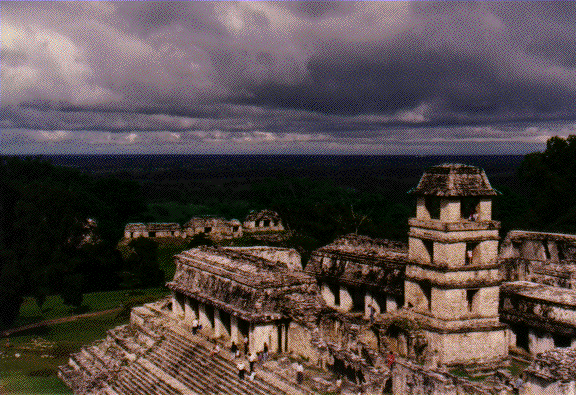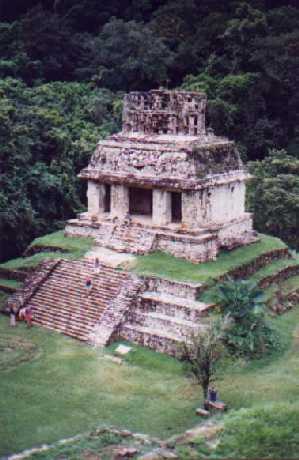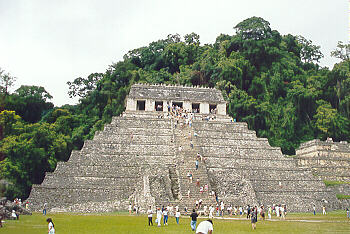| Chichén-Itzá |
| Palenque |
| Uxmal |
| Yaxchilàn |
| Tulum |
| Cobá |
| Dzibilchaltún |
| Teotihuacan |
| Tula |
| Home |
This pyramid site has many unique, decorated motifs. Many seem Asian in nature, which adds to the speculation that the Maya people had contact with East Asia at some point.

There is a long confusing history dealing with Palenque. Cortés passed within 30 miles of the city, never realizing it was there and then in 1773, a Spanish monk wrote about Palenque as an Atlantean post. In 1807, a Spanish expedition wrote a report about Palenque but lost the document for 30 years.
Palenque is set up near a dependent water source, the Octum River. A number of smaller rivers cross this site. Because of this great location, the Mayas were able to establish an adequate irrigation system to flow into the city.
Palenque is located in a region designated as Palenque National Park in the foothills of Chiapas, México. It has also been declared as the most beautiful Mayan ruin. Its ruins are among the most aesthetically impressive in Mesoamerica (Hunter 1997).

The Temple/Pyramid of Inscriptions is the most interesting at Palenque. It is the tallest pyramid and contains the tomb of the most powerful Mayan priest Pa Kal, quite obviously this was what it was intended for, however, the first discovery of the burial shrine was made in 1952.
